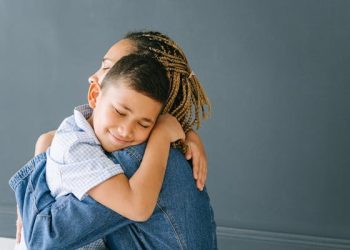Recently, two different communities, miles apart, El Paso, TX and Dayton, Ohio, were added to the list of senseless gun violence. Fifteen hours apart, people were left dead by gun violence, leaving a nation to grieve and continue to question why. Both incidents were marked as two of the deadliest in U.S. history, leaving school children, who were happily out school shopping, among the dead.
Gun violence is on the mind of many people as a result of these two incidents. And of course, that includes the minds of our children. How do you explain these incomprehensible acts of violence to those who are among the most innocent of us all?
“Think about our role as parents where we are feeling vulnerable ourselves but it’s our duty to create a safe container for our children,” Family psychologist Dr. Janet E. Taylor told Good Morning America in an interview. “And by helping them reestablish their safety we also can reestablish our own, because we need a lot of pep talks too.”
To help with the conversation, her are six ways to continue the conversation and talk to your children about mass shootings.
1. Don’t make assumptions about what they know. To start your conversation, ask them what they have heard or have seen on television. Don’t make assumptions that they already know what has happened because you do. Reduce your risk of oversharing and let them talk first.
2. Let them lead the discussion. By letting children lead the discussion, you will be able to gauge just where there are at with processing what has happened. Listen, then respond.
3. Make conversations age appropriate. This goes without saying. Children, at different age levels, grasp conversation differently. Make sure to tailor your conversation to your child’s age and discuss things on their level. Regardless of the age, reinforce that you are there to listen and help them get through the fear of mass shootings.
4. Repeat the Conversation. Make sure that you talk to them more than one time. Revisit the topic, ask questions, assess how they feel. Make sure to reinforce your feelings. Let them know what’s on your mind, concerns, etc. But most of all, let them know that it is normal and healthy to feel worry, fear, or sadness. Yet, with your reinforcement, they will ultimately feel safer.
5. Make sure your smaller children know not everyone is “a bad man”. Smaller children tend to lean towards “good” and “bad.” Let them know that there are more good people in the world than bad.
6. Make safety plans. Talk about safety plans and how you and your children can keep safe. Talk scenarios and “what would you do”? Consult local authorities and police. Preparation will help children feel less powerless in a situation. Find teachable moments, and most importantly, always keep the lines of communication open.
“The goal is not to stamp out our kids’ anxiety,” Simmons said. “It’s to give them a space where they can feel their feelings and also let them know that we’re here holding them and that we’re going to take care of them. You can’t say to your kid, ‘I guarantee everything is going to be okay,’ but you can say, ‘Here are the good people that we know and here is our home and we’re safe and we love you and we’re going to try every day to be safe together..”







